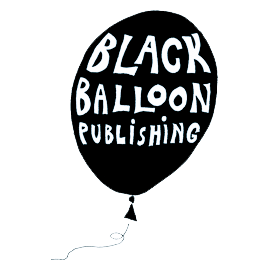
Whenever I hear about The Great Gatsby, my mind shuttles to a passage of Haruki Murakami's Norwegian Wood, one of my oft-read favorite novels. Like me, the protagonist Toru is a serious rereader: “This is my third time through [Gatsby], and every time I find something new that I like even more than the last time.” So it's not too surprising that The Millions (and a linkedGuardian article) posits The Great Gatsby as the most “rereadable” fiction. Since my rereading habits tend to change with the seasons, let me offer a few recommendations for winter nesting, summer tanning, astral projecting, and more.
• Cocooning for the winter: I plowed through Fyodor Dostoevsky's The Idiot and Crime and Punishment in a chair next my studio's radiator, where the hiss and clatter of pipes covered whatever music was playing the background. To me, they're the most cold-weather appropriate of this Russian's enveloping oeuvre.
• Beach jaunts: Thomas Mann's Death in Venice radiates with dry summer heat and soothing Adriatic air, and its novella length is perfect for beach reading (tack on 45 minutes for the Nassau County train ride). Dostoevsky's short novel The Gambler is another warm-weather favorite—and I'm admittedly smitten with Mlle Blanche de Cominges.
• Emotional inspiration, in brief: Anton Chekhov's short stories never fail me. “The Huntsman,” “Anyuta,” and “The Black Monk” are major tearjerkers—and with Chekhov's unbelievable gift for brevity, “The Huntsman” achieves this over barely four pages. I share these with girls to show them that I am a sensitive dude.
• Emotional inspiration, long read: Zadie Smith's The Autograph Man...and yes, I love White Teeth as well. I met Smith at a reading back when The Autograph Man debuted (she read the prologue, another significant tearjerker), and I've returned to her idiosyncratic second novel ever since.
• Far East escapism: Haruki Murakami's pop psychedelic The Windup Bird Chronicle. I've written about this before for Black Balloon, and it's my go-to for getting “away." Plus, Dance, Dance, Dance is one heady trip (psychic teenagers and talking sheep, anyone?).
• Even farther (like another universe) escapism: Douglas Adams' The Ultimate Hitchhiker's Guide to the Galaxy, or as the subheading reads: “five novels in one outrageous volume.” I tend to tucker out at So Long, and Thanks for All the Fish, but it's still a stellar ticket outta here. Towel not included.
For my fellow rereaders, I close with a helpful tip. See, my Manhattan studio couldn't accommodate a proper library, but my reading habits demanded one. To combat my finite space, I read and re-read certain novels until I'd exhausted them, and then I shipped them back to my parents so I could buy more.
But the Murakamis, the Russians, Zadie...those I made room for. Who needs a bathtub, anyway?
Image courtesy the author

Some folks make New Years resolutions to drink less and exercise more. This year, I’ve resolved to write better marginalia in the books I read.
In the December 30 issue of the New York Times Magazine, Sam Anderson offers a sampling of his marginalia from some of the books he read in 2011. I admire Anderson for this—it’s like peeking inside another’s intellect and imagination. And his article inspired me to take a closer look at what I write (or don’t write) in the books I read.
I am currently reading Dostoevsky’s The Idiot. Which means Dostoevsky’s text is being slowly invaded by my own jottings. I underline, I circle, I draw arrows to connect specific words and phrases, I use exclamation marks to highlight passages I like and large Xs to cross out phrases or plot developments I find obnoxious. And like Anderson, I’m a chronic margin scribbler.
Sometimes my comments are of the ordinary roadmap variety (page 31: “Note importance of physiognomies in D’s descriptions”). Other times, they might point out parallels with other characters/works (page 227: “Note similarities to Raskolnikov’s wandering in C&P) or try to draw out the philosophical depths of Dostoevsky’s story (page 226: “pre-epileptic epiphanic illumination --> higher existence --> fleeting --> sublime moments of infinite clarity and understanding accompanied by suffering”). These notes aren’t intended for some greater end or project (although, come to think of it, it would be interesting to trace the meaning, use, and development of human “strain” throughout Dostoevsky’s novels); they simply represent my brief thoughts and reflections. They help keep me engaged while I read.
Unfortunately, however, I’m a hyper-self-conscious marginalia writer. I dwell too much over the right words, worry too much about trying to express an exact thought. Perhaps I’m also worried about what others might think if they read my scribblings. What if, after I died, a friend came across my marked-up copy of The Idiot? “Why the hell did he write that?" this friend would say. "That wasn’t what Dostoevsky was going for at all! I didn’t know Todd was such a simpleton.” But marginalia ought not be an art of perfection. It should be an informal stream-of-consciousness dialogue with the text. As Rachel recently blogged, marginalia makes reading more participatory and performative.
So as I wrap up The Idiot and begin re-reading The Brothers Karamazov, I’m resolved to become a less self-conscious and more expressive scrawler. Here’s to a 2012 filled with better marginalia.
Photo: Author






 A Black Balloon Publication ©
A Black Balloon Publication ©